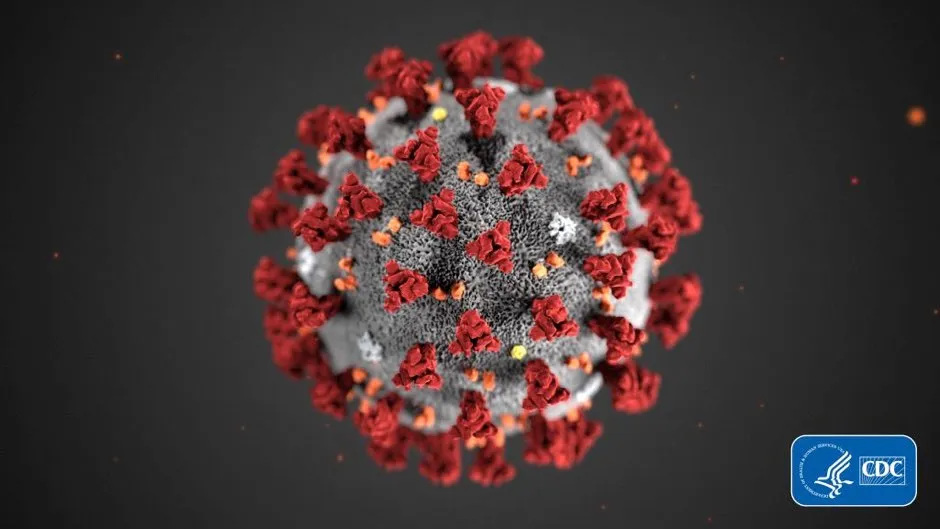Research reveals more than 40 per cent of coronavirus cases in an Italian town were asymptomatic.
A study of COVID-19 in the quarantined town of Vo, where most of the population was tested, indicates the importance of asymptomatic cases.
The early identification of infection clusters and the timely isolation of symptomatic as well as asymptomatic infections can suppress transmission and curb an epidemic in its early phase, researchers say.
They suggest this is particularly important when considering a potential second wave of transmission.
Read the latest coronavirus news:
- Coronavirus vaccines: Where are we now?
- Simple salt water solution 'could help reduce symptoms'
- Male donor plasma 'contains more coronavirus antibodies' than female
Researchers from the University of Padua and at Imperial College London indicate asymptomatic or pre-symptomatic people are an important factor in the transmission of the disease.
Pre-symptomatic people are those who are carrying the virus and later go on to develop symptoms, while asymptomatic refers to people who do not show any symptoms at all.
According to the scientists, widespread testing, isolating infected people, and a community lockdown effectively stopped the outbreak in its tracks.

Vo, which has a population of nearly 3,200 people, experienced Italy’s first COVID-19 death on 21 February, and was put into immediate quarantine for 14 days.
During this time, researchers tested most of the population for infection of SARS-CoV-2, the virus that causes COVID-19, both at the start of the lockdown (86 per cent tested) and after two weeks (72 per cent tested).
They found that at the start of the lockdown, 2.6 per cent of the population (73 people) were positive for Sars-CoV-2, while after a couple of weeks only 1.2 per cent (29 people) were positive.
Both times 42.5 per cent of the positive cases were asymptomatic, according to the research published in Nature.
The results also suggest that it took on average 9.3 days for the virus to be cleared from someone’s body.
As a result of the mass testing, any positive cases, symptomatic or not, were quarantined, slowing the spread of the disease and effectively suppressing it in a number of weeks.
Co-lead researcher Professor Andrea Crisanti, from the department of molecular medicine of the University of Padua and the department of life sciences at Imperial, said: “Our research shows that testing of all citizens, whether or not they have symptoms, provides a way to manage the spread of disease and prevent outbreaks getting out of hand.
“Despite ‘silent’ and widespread transmission, the disease can be controlled.”

The results of the mass testing programme in Vo informed policy in the wider Veneto Region, where all contacts of positive cases were offered testing.
“This testing and tracing approach has had a tremendous impact on the course of the epidemic in Veneto compared to other Italian regions, and serves as a model for suppressing transmission and limiting the virus’s substantial public health, economic and societal burden,” Prof Crisanti added.
How to stay safe during the coronavirus pandemic:
- Washing your hands six to 10 times a day could lower coronavirus risk
- Hitting the wall: Can you change your mindset to endure lockdown more successfully?
- Should we all wear face masks?
As well as identifying the proportion of asymptomatic cases, the team also found that asymptomatic people had a similar “viral load”, the total amount of virus a person has inside them, as symptomatic patients.
The researchers found that the viral load also appeared to decrease in people who had no symptoms to begin with but later developed symptoms.
This suggests asymptomatic and pre-symptomatic transmission could contribute significantly to the spread of disease, making testing and isolating even more important in controlling outbreaks.

Co-lead researcher Dr Ilaria Dorigatti, from the MRC Centre for Global Infectious Disease Analysis, Jameel Institute (J-Idea), at Imperial College London, said: “The Vo study demonstrates that the early identification of infection clusters and the timely isolation of symptomatic as well as asymptomatic infections can suppress transmission and curb an epidemic in its early phase.
“This is particularly relevant today, given the current risk of new infection clusters and of a second wave of transmission.”
What is the R number, and why is it relevant to coronavirus?
The reproduction number – often called the R value or R number – is a measure of a disease’s ability to spread. It tells us how many people a single infected person will pass on the disease to.
The R number for COVID-19 that’s being quoted in the media and government briefings is what’s known as the ‘effective’ reproduction number. This value can go up and down.
We can reduce R by making it harder for the disease to spread, by implementing measures such as social distancing, closing restaurants and non-essential shops, and encouraging people to stay at home.
Every disease also has what’s called a ‘basic’ reproduction number, R0, which is the fixed value of R if no measures are put in place. For example, measles is highly contagious, with a R0 as high as 18, while COVID-19 has a R0 of around three.
So if COVID-19 was allowed to spread through the population, an infected person would, on average, give the disease to three other people.
But if all these people are practising physical distancing, then the virus can’t spread so easily and the effective R value goes down.
The crucial thing is to keep R below 1. If we can do this, then the number of new cases dwindles and the outbreak will eventually come to a halt.
Conversely, if R rises above 1, then we run the risk of rapidly escalating case numbers that would require stronger measures to keep the virus under control.
Because of this, R is used by governments to assess how we are doing in our efforts to stop the spread of COVID-19, and to adjust our actions, if needed.
Read more:

